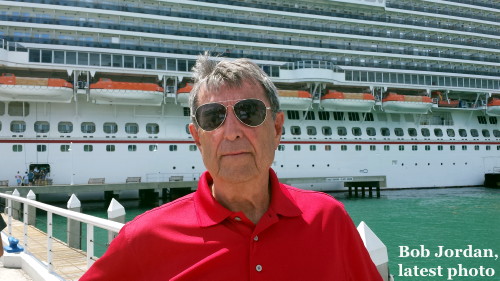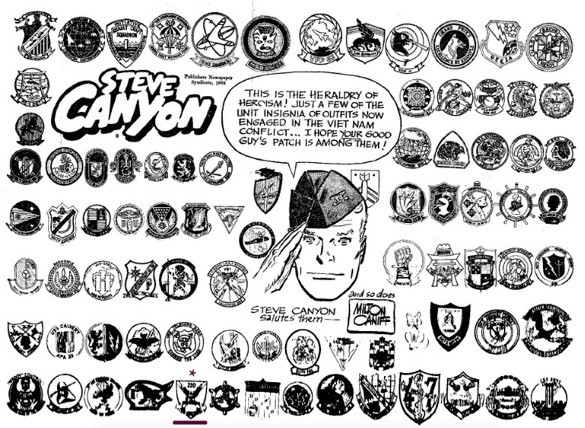FIRST LIEUTENANT ROBERT J. JORDAN,
ORIGINAL CATKILLEER, 1965–66
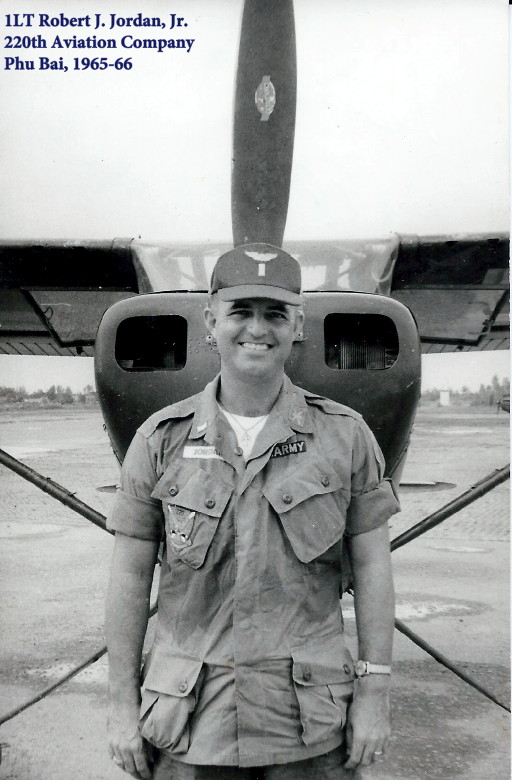
ORDERS, FORT LEWIS:
Unit Assignment, Movement Orders, 220th Aviation Company, Fort Lewis, Washington:
The Process—Getting to Vietnam:
Dear Catkillers:
I have given a great deal of thought on how to approach these memories and decided to break it down to Fort Lewis and then the time in RVN. I was assigned to the 27th Field Artillery Battalion out of flight school and Darl McAllister was already there upon my arrival and did his best to get me settled in. At some time we gave serious thought to requesting rotary wing transition and was informed by DA that we could attend and on completion of the course we would be assigned to the 220th Aviation Company and deployed to Vietnam. We declined and in a matter of weeks we got our orders for the 220th Aviation Company. Jim Morris was also stationed at Fort Lewis, however, he was in another artillery unit.
I do not remember much about our time at Fort Lewis with the exception of our assignment to ferry O-1ís from Wichita, Kansas, to the West Coast. I participated in two; one to San Diego and another to San Francisco (maybe Oakland). My memory fails me on many names but I do remember Mike Pepe on the San Diego trip. We RONed in Phoenix and took in the local Playboy Club. After dropping the aircraft off at the terminal in San Diego, we were scheduled to fly back via commercial aviation. We supplied our own parachutes for the ferry flights and expected to check them in before boarding. The agent refused to accept them as baggage. As we were waiting to board, wearing our chutes, other passengers were beginning to look concerned and asking questions. Before it went too far another agent ran out, calmed everyone down and took our chutes to be placed in baggage.
The trip to San Francisco allowed us to RON in Las Vegas (Great flight plan!). When I finally figured out which was the highway and which was the runway, I made my approach and on short final I saw an empty 55 gallon drum blow across the runway and I knew I was in trouble. I burned out a brake getting into my parking space and consequently could not continue until the brake was repaired. Fred Bowen volunteered to stay with me in Vegas and we were to continue our trip together. Great fun and Fred paid for our expenses via the slot machines. I never saw anyone so lucky.
Fred, who was transferred out when we got to RVN, liked to play a joke whenever we were at a location with a PA system He would have the agent page Major Tat Fardan, who did not exist. He got that name for a label on our conex containers: TAT FARDN.
We made the trip from Lewis to DA Nang via C–130, riding in bucket seats with our feet propped on the packed equipment which filled the center of the bay. Our flight did RON in Hawaii and I think Manila. My memory fails me about the short trip to Phu Bai but I am pretty sure it was via air.
I think that covers it.
Thanks for listening.
Bob
Ferry Mission Memories, O–1s to San Diego, Jim Keathly:
The 220th Aviation Company was residing at Ft. Lewis, awaiting orders to go to Viet Nam. Orders were received for a group of pilots to fly to Wichita, Kansas to ferry O-1 aircraft to San Diego for shipment to Viet Nam. The orders specified that we had three days to have them in San Diego. Several of the group decided to fly home for a final visit with family and then fly non–stop to San Diego. We decided to take the route of Wichita to San Antonio to Las Vegas and then to San Diego. The aircraft had been re–figured to add communications to the back seat, some seat armor and painted for Army or Air Force use. We each were able to log instrument time and took turns leading the flight of aircraft. Some memorable moments were landing Army aircraft at Navy fueling stations and taking off short field on strips for jets. We really were able to see America first hand including close up and personal view of the Grand Canyon and flying across the Rockies at altitudes causing wing ice. It was a first time visit for me to Las Vegas and we all enjoyed the single evening while there. The fueling stops were all at service installations and we received a lot of interest from the various services with the flight of Cessnas. I am sure that others on the flight will have additional memories to provide and I didnít realize that a lot of the memories of the flight have already been forgotten.
Regards,
1LT Jimmie F. Keathly
[Original Catkiller, 1965]
ORDERS, VIETNAM:
- PDF version of Special Order 156, 17 July 1965
- PDF version of Flight Safet-Weight and Balance of O-1F, 21 October 1965
- PDF version of Unit Directed Travel Orders, 28 December 1965
- PDF version of Unit Directed Travel Orders, 23 Feb 1966
- PDF version of Unit Order 9, 4 March 1966
- PDF version of Unit Order 12, 18 March 1966
- PDF version of Unit Order 138, 6 June 1966
Recollections From Vietnam:
The weather was hot and our issue of jungle fatigues and boots was slow to arrive. All of us were anxious about the hazards associated with flying over enemy territory even with the arrival of several pilots who had been in country for several months. My first mission was with a Marine observer and when he asked for a look-see at low level I got a firm grip on the throttle, the control stick and the seat. We did not draw any fire and my courage begin to build. For a short time when we started flying our missions, a parting farewell was something on the order of, “If you donít make it back, can I have your jungle boots?” Strange as it may sound this did help us.
After the platoon moved to Hue there were opportunities to do some sightseeing in town. Gary Imel and I toured the city on our own one day. I was disappointed to learn that the Citadel was not as old as I expected it to be. On later walks in the downtown area I was amazed at how filthy everything was and the sight of children running around without diapers. Some of the platoon members bought snacks from the shops but I never took the chance. Sometime later several of the pilots went to dinner at a restaurant that was in a building built by the French on the edge of the Perfume River. The food was not bad but during the meal I felt movement around my legs and when I looked down there was a dog that appeared to be in the last stage of terminal mange. That was my last venture at Hue social life.
Our billets were across the river from the Citadel with a detachment of advisors commanded by Colonel Boston. My roommate was Jim Harris who had been in the country for several months. There was a guard at the entrance rendered sharp rifle salutes when we entered the compound. He was cross-eyed and earned his job as a reward for bravery. Sometime during my time there we found the need for a heater in our room in order to get any sleep.
It was not uncommon during our trip to the airfield to see Vietnamese women urinating down the side of the Citadel wall. They just lifted the leg of their loose pants and let go. Habits like this helped explain the filth that was so common. During a talk with an Army doctor I learned that the venereal disease in Hue was over 70% and included members of the upper class. Numerous members of our crew took no-sweat pills (penicillin) to protect themselves from catching anything but one had to be evacuated when he did contract an STD. What he caught had already overcome the penicillin in his system and there was no other treatment available at that time. We shared the airfield with Huey crew which was attached to the advisors. There was a wrecked O-1 that was assigned to the ARVNís off to the side, behind the operations building. I t was never replace to my knowledge. ARVN pilots did not have a good reputation. I was told that whenever they took off for a mission they always carried two observers. One of the Da Nang pilots (one of our experienced fillers) was killed in a mid-air with an ARVN aircraft.
I did not have a good initial impression with ARVN observers. During the Ba Long operation my observer kept pulling on my shoulder straps urging me to gain altitude and another time when there was contact above Hue I could not get an observer to go with me. Later, during a conversation with a wiser individual, I came to realize that these people had been engaged in war for almost twenty years and one day would not make any difference to them. It gave me a new perspective on the situation. At a later time, after I left Hue, Captain Ambergerís ARVN observer was killed by ground fire. One time during the monsoon season the north end of the airfield at Hue was flooded to the point that it was questionable whether we could get into the air. Captain Rogers asked me if I thought I could make it and I believed that I could. Using short field takeoff and landing techniques from B phase flight school and without an observer, I had no problem in taking off and was able to use the field when I returned. That was the only time while I was there that happened.
One mission that sticks in my mind was a two ship mission west of Hue to evaluate a B-52 strike. The weather was marginal and we had to delay our entrance into the area until the strike was complete. The weather did not cooperate so I had the other pilot (I do not remember who he was) to take a lower altitude and I stayed above his level but very soon was in an actual instrument condition in an aircraft not equipped for that and I certainly was not proficient even if I had the instruments. I flew in a general direction toward Hue, having aircraft attitude problems, and made a call to Beach Boy Alpha located at Phu Bai. No answer but a short time later Da Nang radar contacted me and instructed me to turn to a north heading, which I thought was the wrong direction but at least I was taking to someone. I followed directions, fighting to keep control until I flew into a hole in the cloud cover and could see the ground. I notified Da Nang and pointed the aircraft down as steeply as I dared. All is well that ends well.
The only source we had to engage the enemy was our 2.75 FFAR and artillery. We suggested to the Air Force that we should be utilized as forward air controllers. The answer was positive but first we had to attend a school that lasted a week or two and that was not possible considering our situation supporting the Marines and the Black Panther Division. Next we made the same suggestion to the Marines and they thought it was a great idea without prior training. The Da Nang platoon did that quite often but it was pretty rare in the Hue/Phu Bai area. One mission I was involved in resulted in over 50% duds and I thought it provided ambush material for the VC.
The philosophy for the 220th Aviation Company, according to Major Curry was that we were not going to get medals for doing our job providing support for the Marines and , for the Hue platoon, the Black Panther Division (rumored to have won in every engagement with the VC). That all changed with an article in the Stars and Stripes concerning the award of a Silver Star to two individuals. A young Marine received his for bravery in the face of the enemy while being wounded at least twice. The other (the one that changed our philosophy) was granted to a Major Rode, and Air Force FAC for conducting an air strike or just doing his job.
This led to me being reassigned to company headquarters!
My new assignment was in operations, responsible for awards and decorations and intelligence. The awards and decorations desk was created due to the changed philosophy about medals in the company. My task was to make sure that the aviators in the 220th received all due recognition for their efforts. I believe that I accomplished that and then some. I would get the basic story of the event and I would write it in the style expected for approval of the award. I kept no records of the number of awards recommendations submitted and approved but the percentage of recommendations approved was high. Only once did I question a recommendation and that was for a DFC for an action at Ashau. I thought it should have been a Silver Star but Captain Schmale assured me that it deserved only a DFC and it was awarded.
I kept my VR area south of Phu Bai and still flew missions there. In addition I was sent out to the other platoons when their hours flown reached the maximum. I felt fortunate to have been able to fly missions from one end of I Corp to the other.
J.D. Richards was my observer on a VR north of Hue where there had been enemy contact. We discovered two of them evading the marine sweep and I engaged them with a rocket, which missed but set the area on fire. I continued to circle the area, keeping the VC in site while J.D. maintained contact with the Marines. I heard a sound that I believed to be a smoke grenade being activated and wondered why J. D. was dropping one when the area was well marked with smoke. J.D. informed me that he had been hit by ground fire. I turned around and could see no wound and asked him where. He replied that it was the back of his head. He turned around and there was nothing. Turned out there was no wound and we figured that our cornered VC had fired at us, the round passing through the observerís open windows and behind J.D.ís head.
I flew a mission while I was with the Da Nang platoon carrying an ARVN observer out of Hoi An that almost turned out badly. We flew VR for about two hours with no significant sighting and when I took off from Hoi An, after dropping my observer, my engine died. I did everything right, electric fuel pump, switch tanks, didnít remember doing it and got a restart. I finally checked the fuel gauges and both needles were in the red. Not possible with only two hours flight time so I landed to visually check the tanks. I could see no fuel and decided to see if I could get back on the tank I had switched to since I saw no way to get fuel there. I called Da Nang and told them about my problem and made it back. Captain Chancellor was waiting for me, upset over my call. He didnít believe me about the fuel but later told me that the carburetor was set at full rich. Bill Welch (the company magnet ass) with the Quang Ngai platoon and I flew a two ship mission. Sometime, during the flight or before we took off, he told me about a monument erected to the VC dead that was located in the area we were to VR in. He had been trying to hit it with rockets but to no avail. We both took a shot at it and missed but my WP rocket exploded and spread into the front of a pagoda. We could see the smoke for a long time. I never did hear anything about that but felt badly and still do.
There were a couple of times when I went to Saigon to pick up aircraft and one was especially memorable. I was billeted with a Dust Off unit in a hotel type building and after the evening meal I elected to return early than the others. When I got to the building it was locked up and I got no response from ringing the doorbell. It was dark and I was the only American on the street and I was getting nervous until I noticed that there was a way to climb up the side of the building and jump over onto the roof, which I proceeded to do. When I landed on the roof I was faced by one of the pilots pointing a cocked pistol in my direction. ďMy God, I thought you were a VCĒ, he exclaimed. I came very close to ending my tour that night.
Captain Schmale was my mentor while I was in operations and I feel very fortunate about that. Hearing about his death on his second tour was difficult to bear. We went to Na Trang for something and I flew us down and back. On the return trip we had to deviate away from Hai Van Pass, out to sea to avoid an air strike in process just at dark. We did not count on the land breeze being so strong and found ourselves pretty far out to sea. It took us around 30 minutes, flying due west, to finally reach land and set down at Phu Bai.
One night there was a revolt in the ARVN compound in Hue and we got a request for a ship to act as radio relay. I must have been on standby because I got the mission. I got concerned when, after my pre-flight, I was set to get into the cabin and discovered that Captain Schmale and Captain Weight were standing on eight side of me, that there was more to this than I knew. I made contact and set up a race track pattern, counter clock-wise, over Hue. About twenty minutes of this and there was an air burst slightly below my altitude. Shortly there was another, higher and closer to my flight path. That happened once more before the mission ended. I do not remember what happened to the members of the revolt but the situation soon returned to normal.
The situation became very tense when we got word that the Ashau Special Forces Camp was being overrun. The Marineís sent out a request for volunteer door gunners for their CH-34 helicopters. I had flown several missions into the camp while I was at Hue and knew the personnel there. (Their shower had a bullet hole in the side with a sign that said ďYou missedĒ) I volunteered, got a steel pot, and was told to wait but never got called. We heard that it really got nasty during the evacuation when it came to shooting people off the helicopterís landing gear so that they could take off. I believe that the south wall of the camp defected something during the siege. I do not believe that the camp was ever reactivated.
Captain Quigley was the operations officer when I was in Operations. One day he sent me up to see how long the O-1F could stay airborne. I took off and climbed to altitude (do not remember the exact altitude), leaned the mixture, and flew for two hours and 11 minutes on one tank. His objective was to let the aviators in the 220th know the maximum time available in case they ever got into a situation calling for endurance. Another mission that stands out in my memory was directing a fire mission from the guns of the battleship New Jersey. It was setting off shore adjacent to my VR area so I got the honor. Unfortunately there were no real target available since the New Jersey cold only fire low angle but I knew of a cave that was a good possibility so we went at it. Amazing destructive power in those guns.
We had the pleasure of VIP visits at Phu Bai. Ann Margaret was impressive, not only for her beauty but I was impressed with her performance when it was obvious that she was extremely tired. She was a real trouper and earned my admiration. Robert Mitchum visited the company area and spent his time in the enlisted club. Word was that he did not care for military officers. I was standing in the road when a crew chief ran up to me with a small pistol in a holster in his hand and told me that Mitchum had left it in the club. The holster had a silver emblem that at first looked like wings but closer inspection showed that it was a woman on her back. I saw MItchum, handed the weapon back to the crew chief and sent him over. Frank Gifford visited and I took him up for an orientation ride around Phu Bai. When he mentioned the underwater bridges he had seen, Major Curry and Captain Schmale thought I had put Mr. Gifford into danger until I assured them that I was well above small arms range. That flight made the Stars and Stripes.
As the end of our tour neared, I was the only original member who had not received orders and I was beginning to get worried. I finally got a call from someone in Da Nang that they had seem my name in the Army Times and that I was scheduled for Germany, helicopter transition enroute.
PHOTO ALBUM:
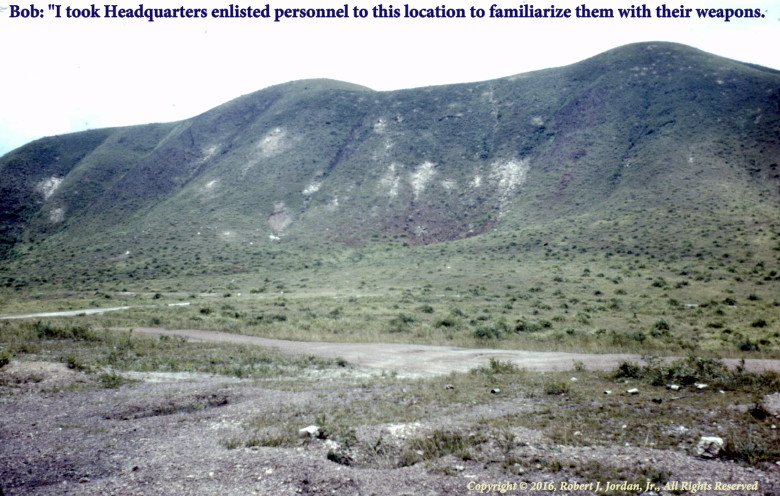
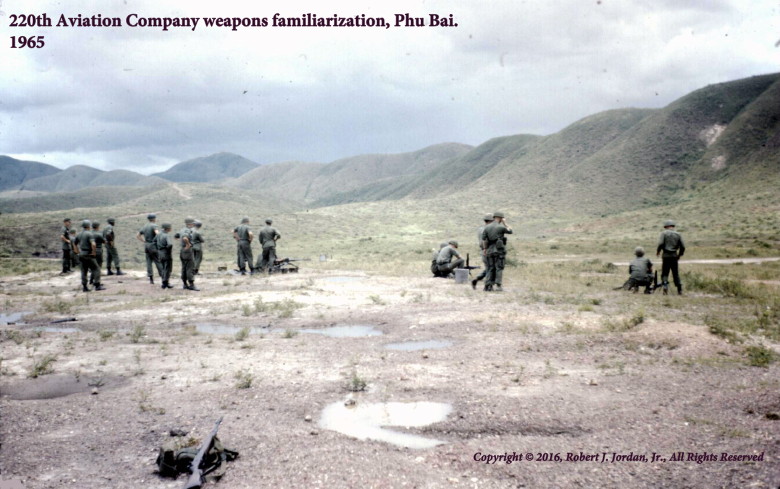
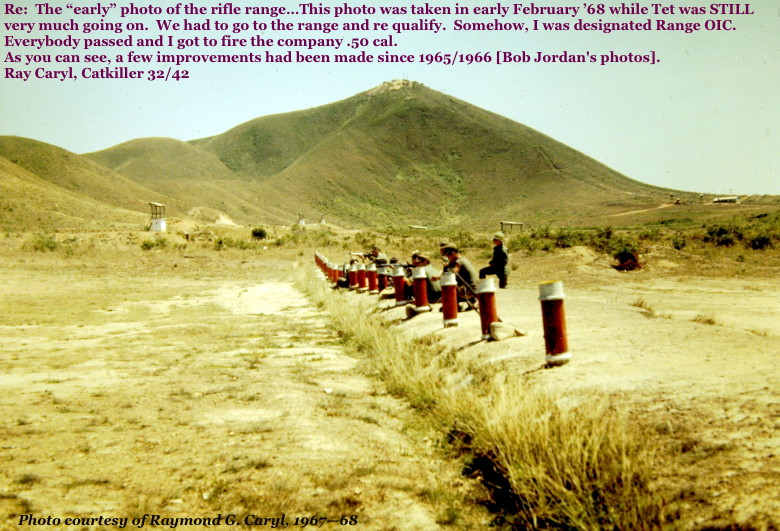
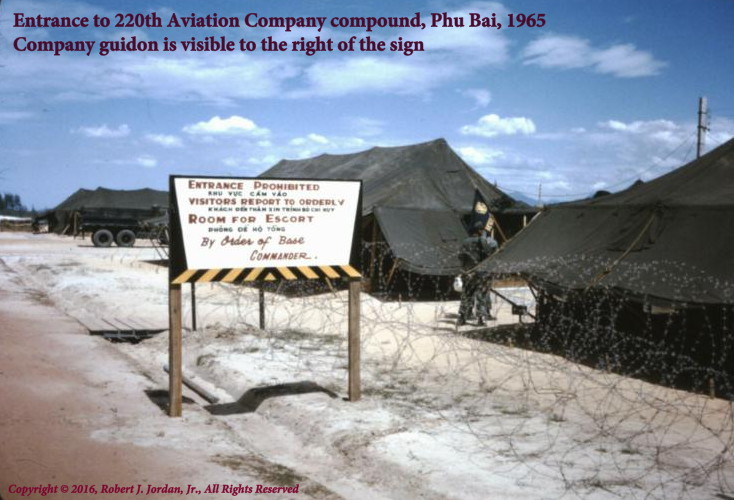
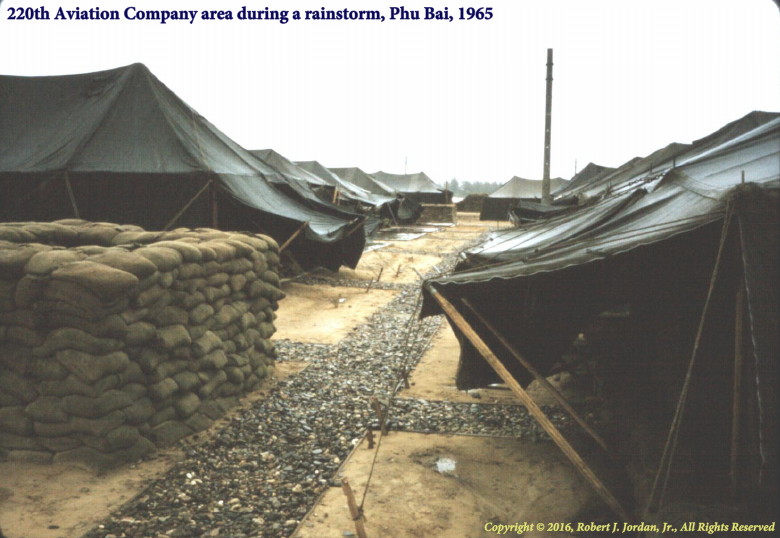
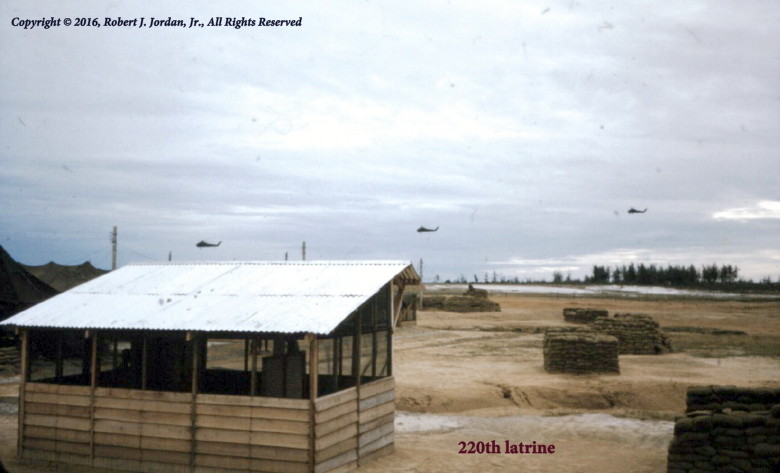
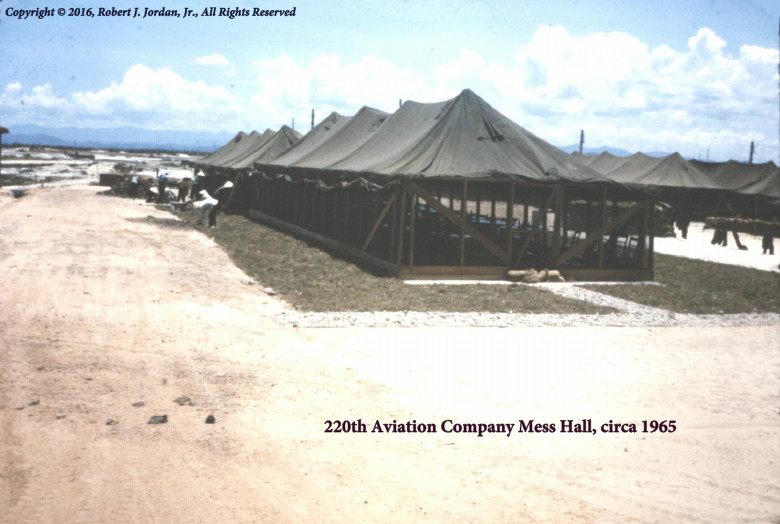
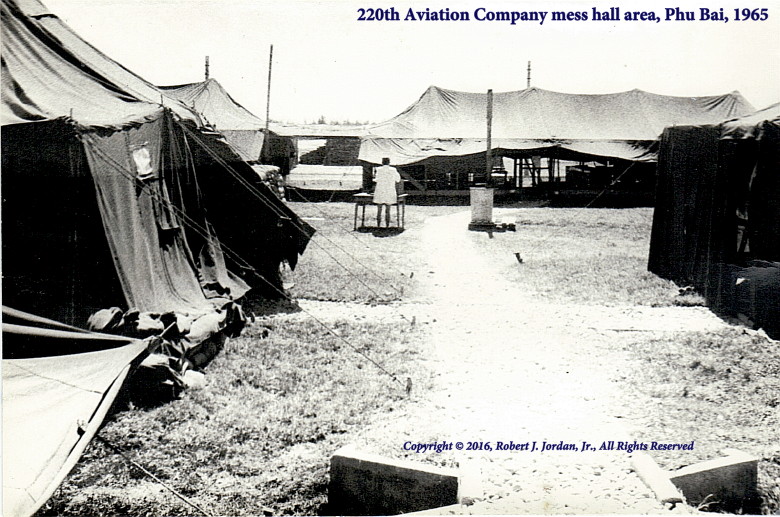
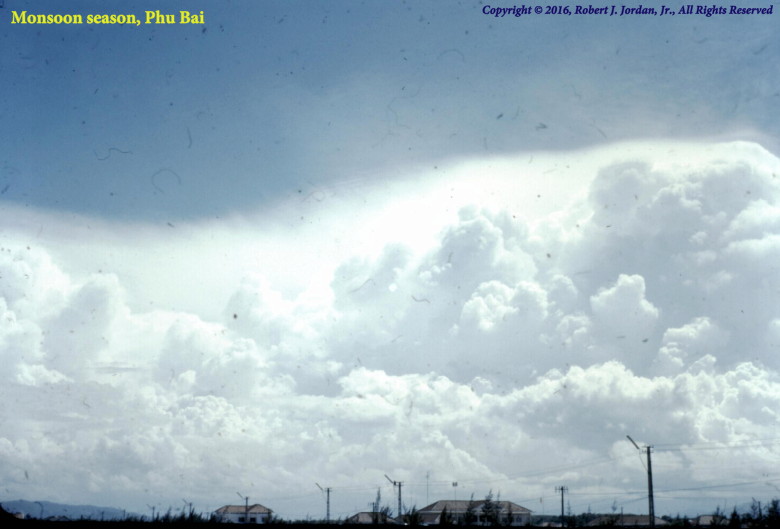
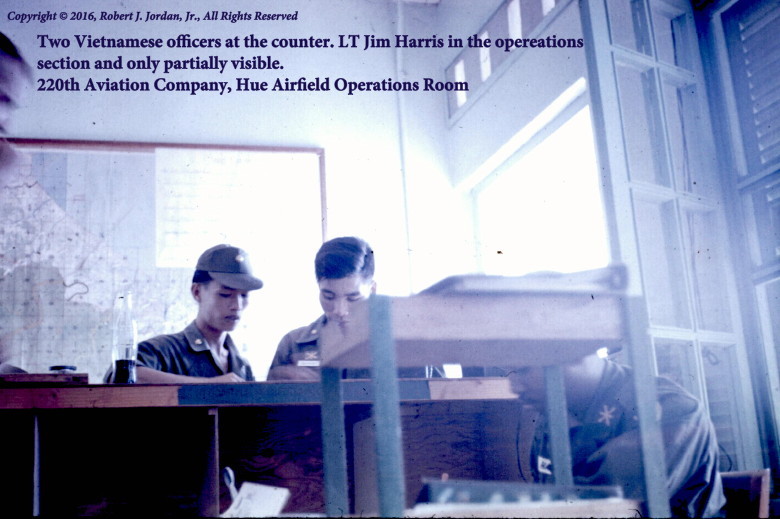
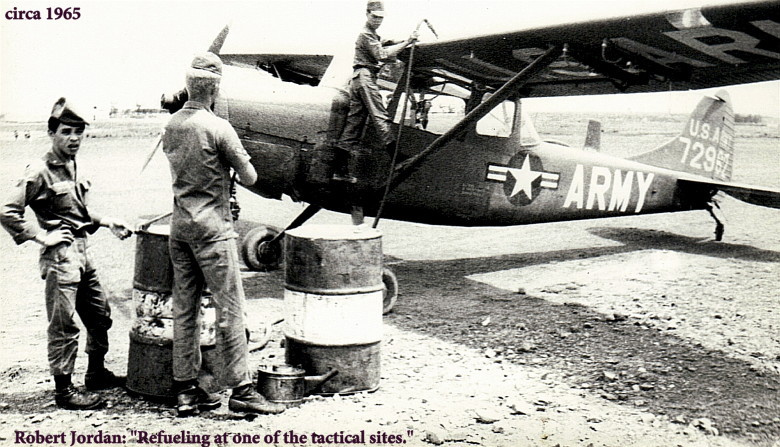
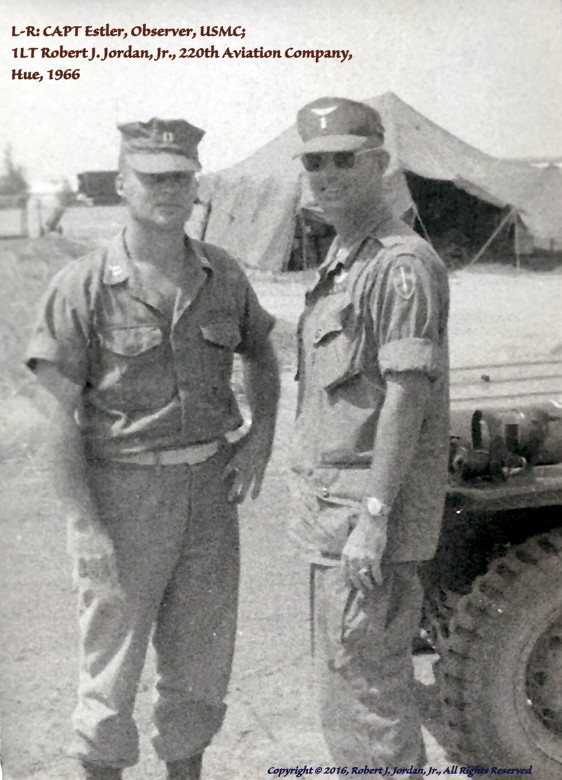
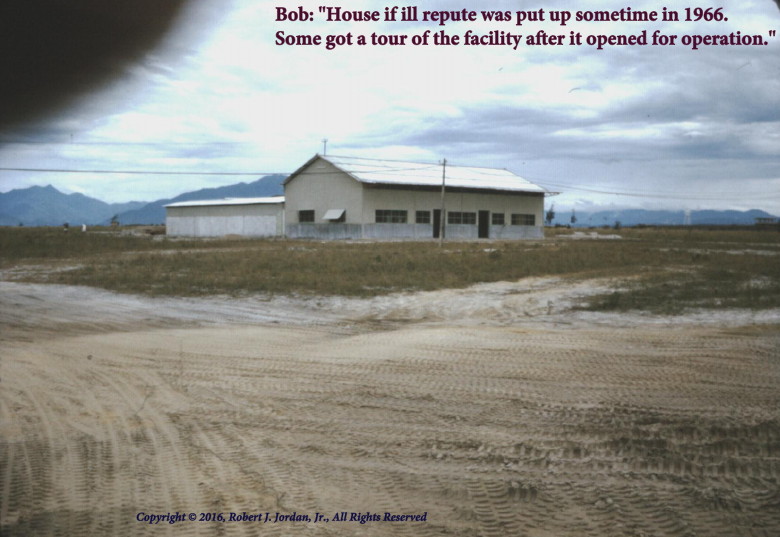
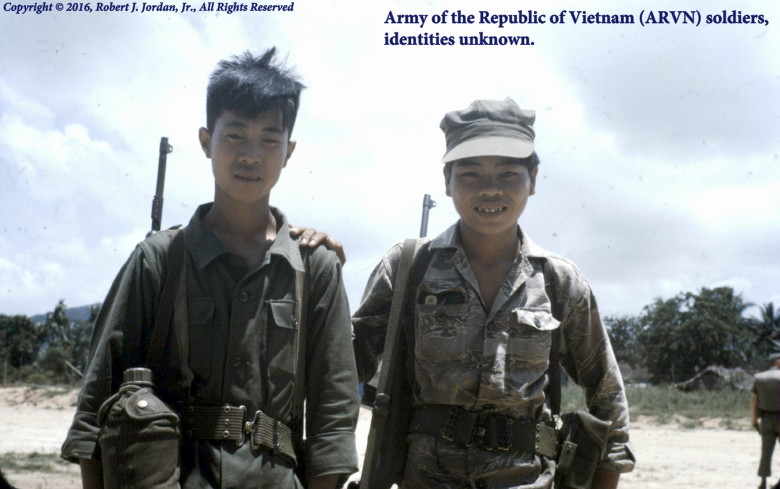
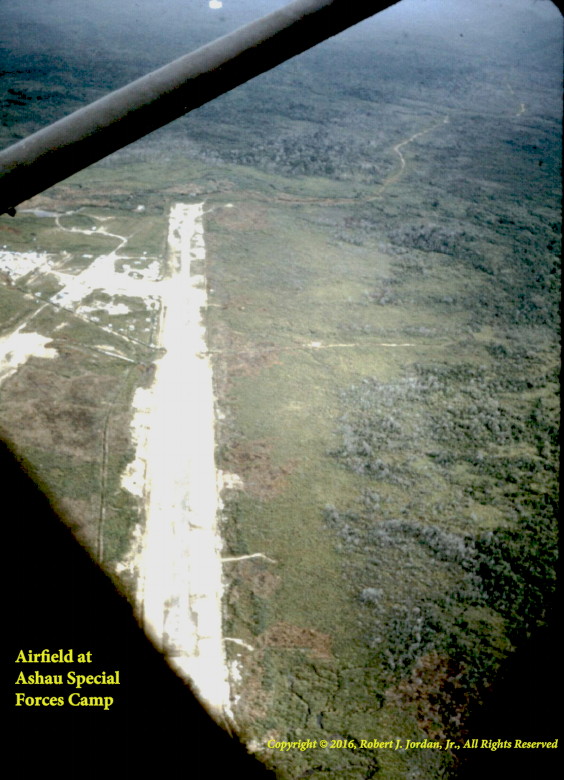
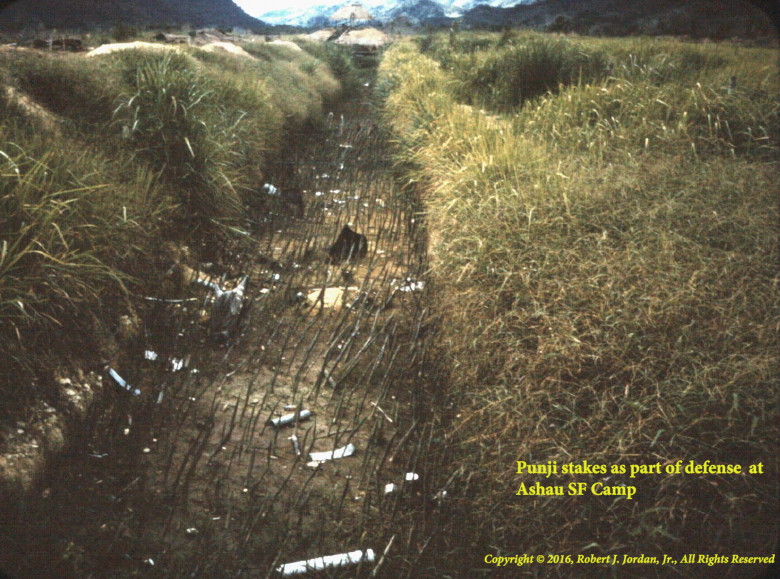
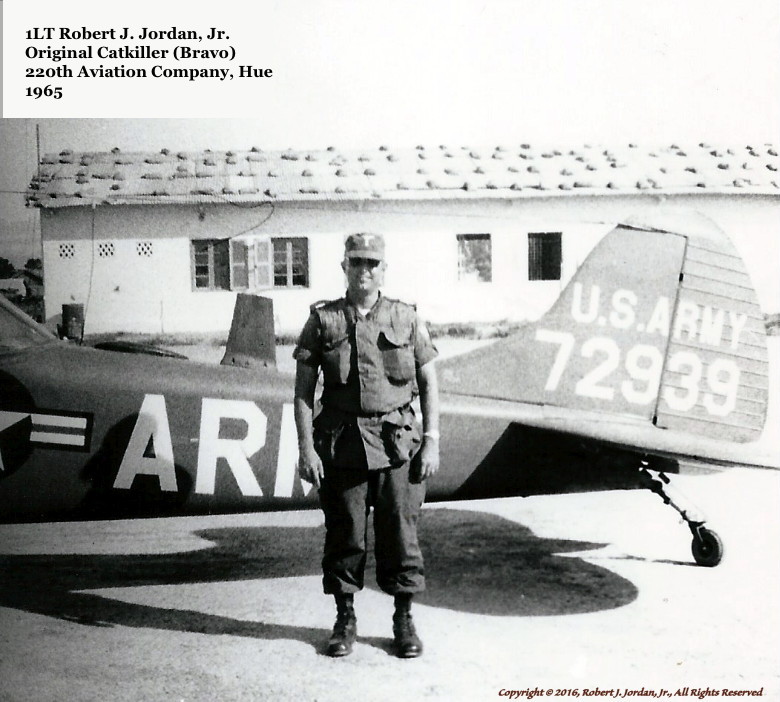
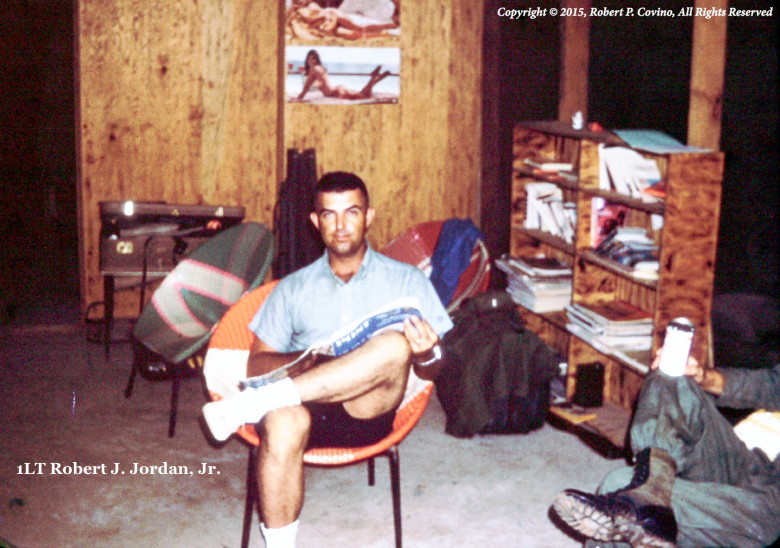
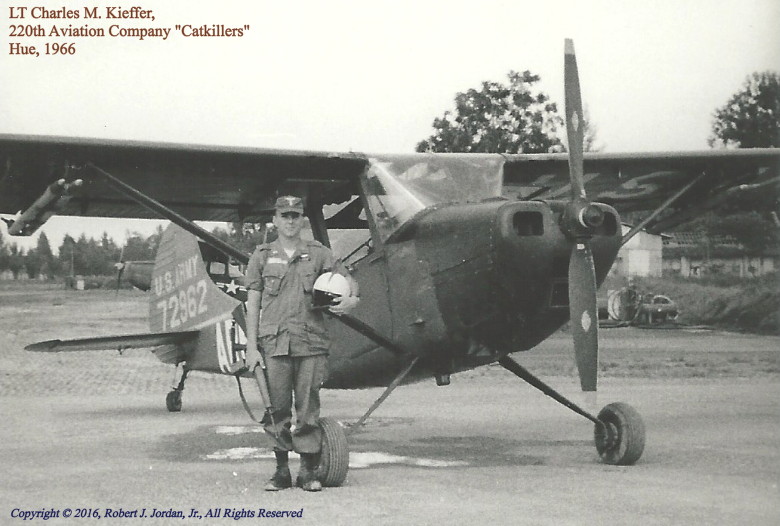
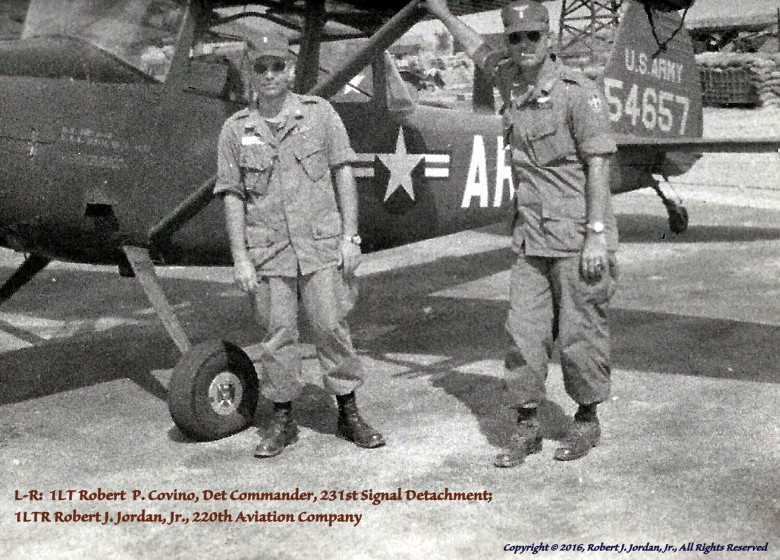
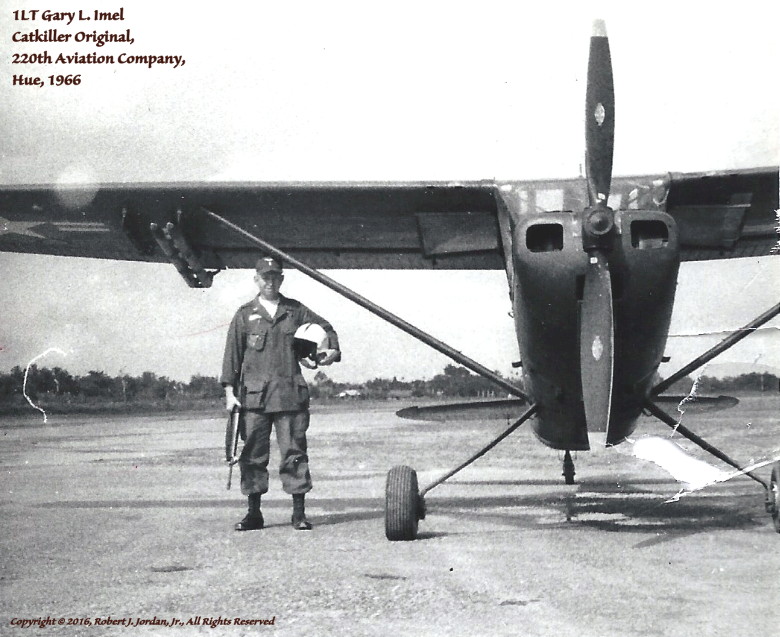
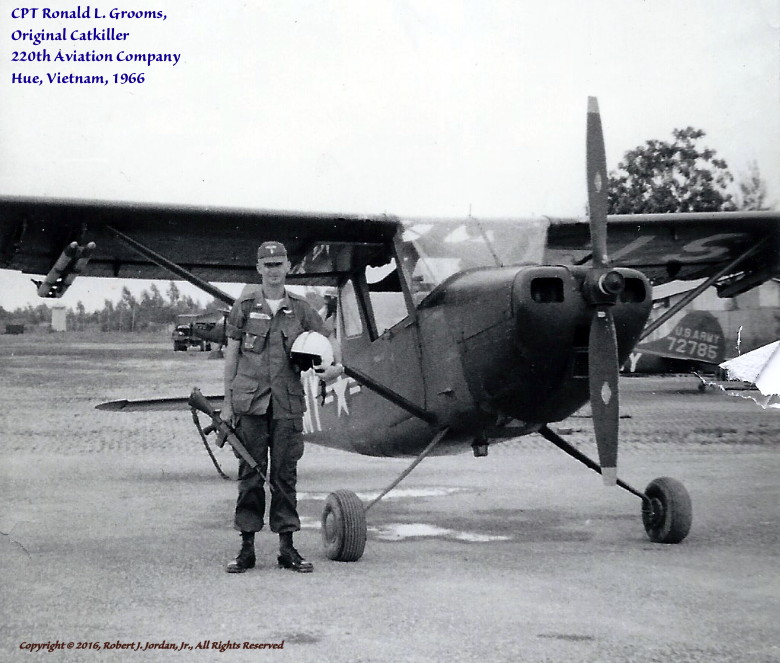
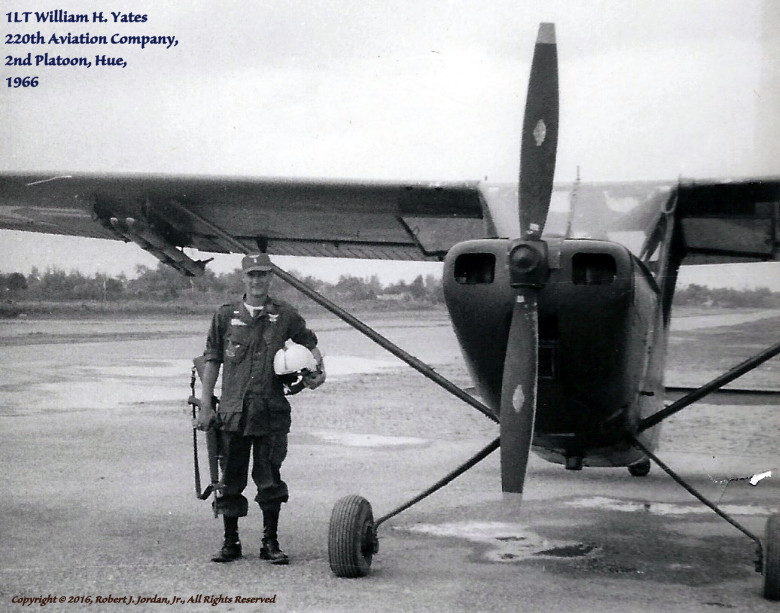
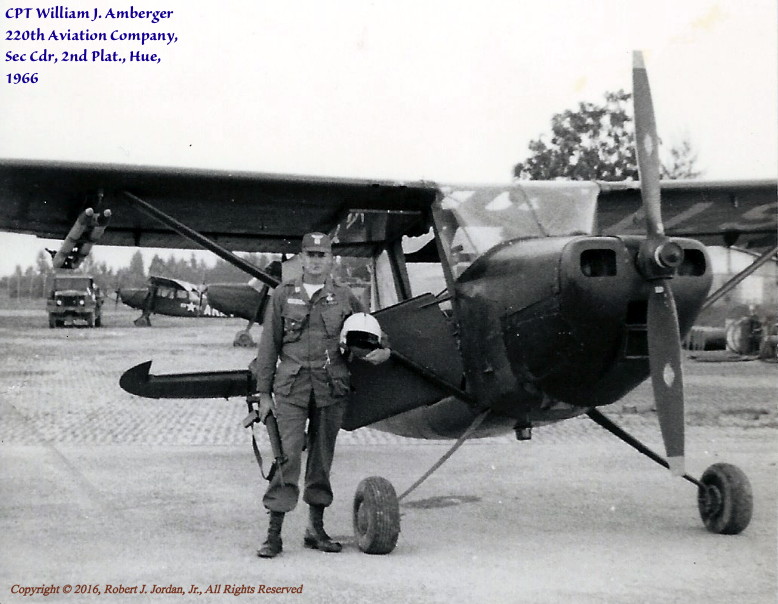
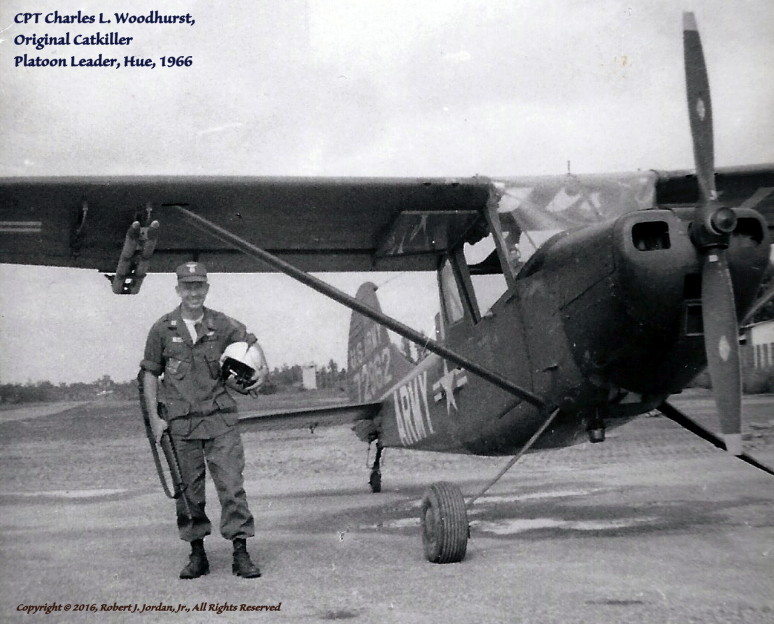
I knew there was more than one awards ceremony at Phu Bai. The next photo
was taken in February 1966 and the presenter is Colonel Howard B. St. Clair.
Editor: other photos from this ceremony are at: SP5 Harry I. Kee, Jr. page award ceremony
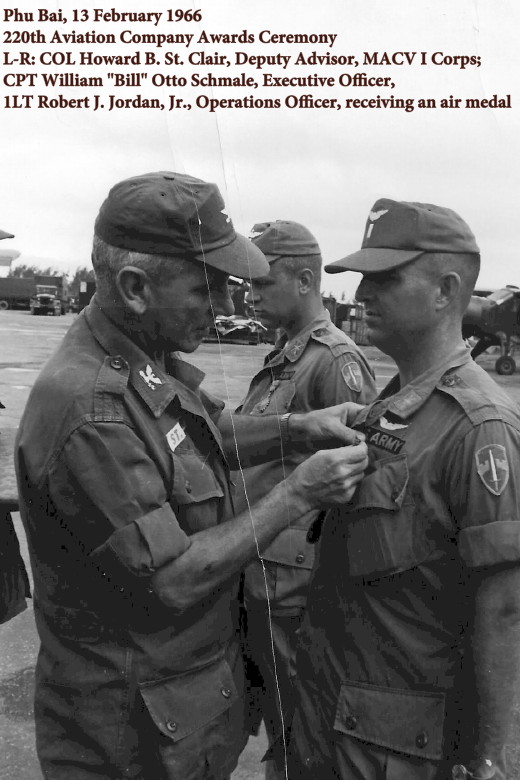
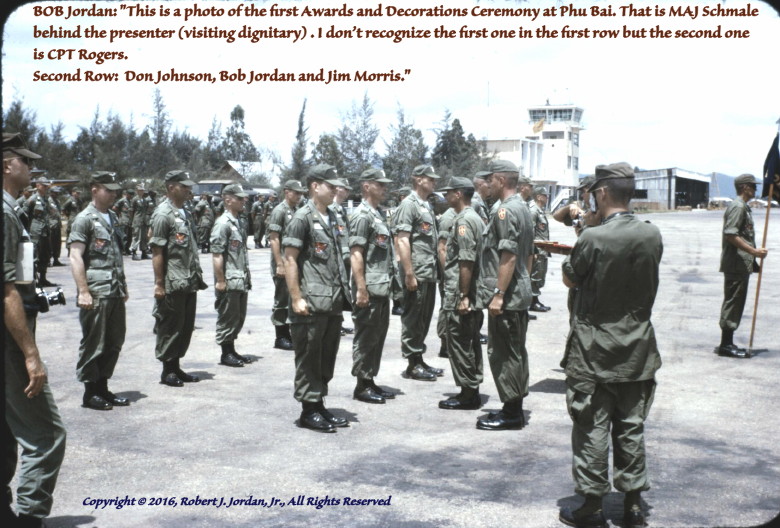
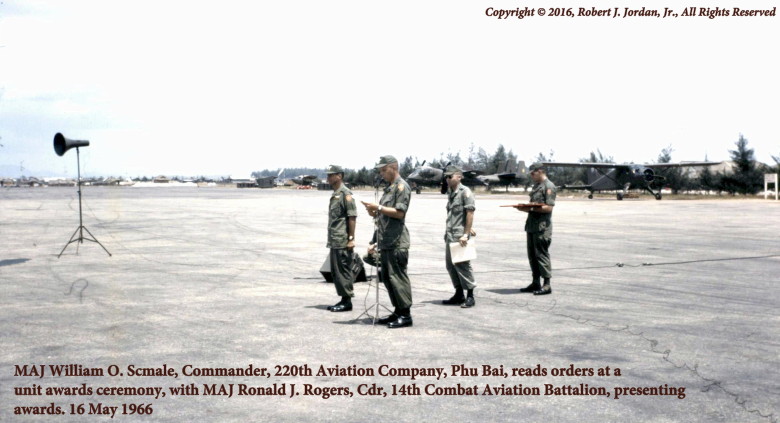
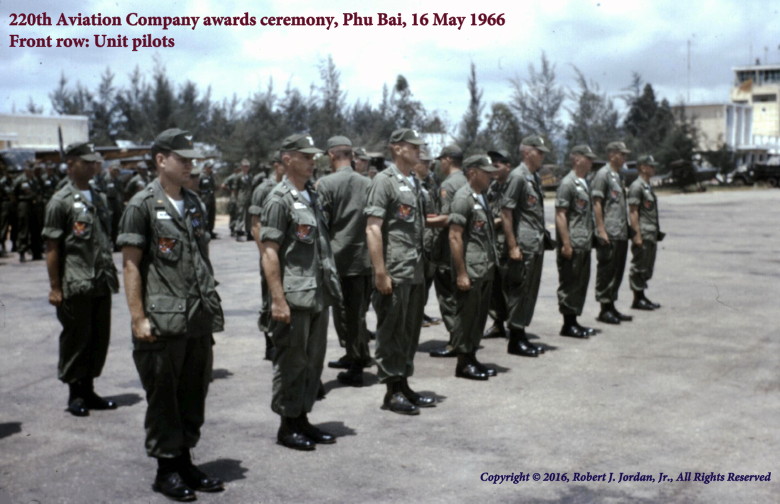
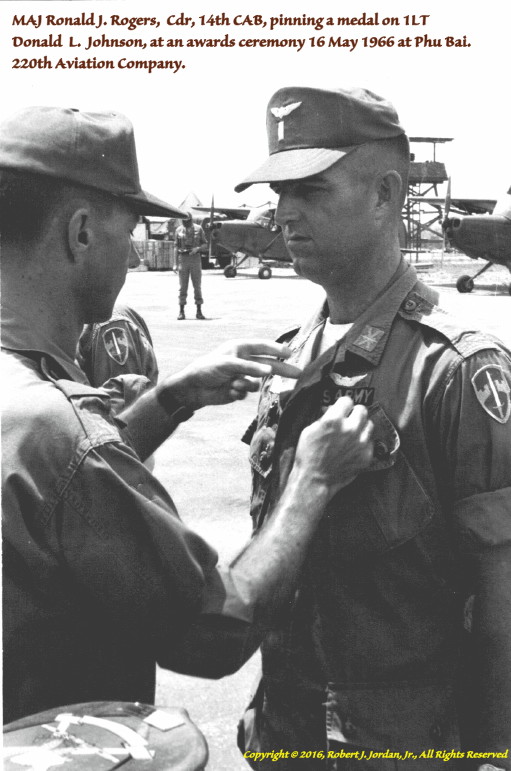
The last photo was taken just before we rotated home. That is why
we were all at Phi Bai. Had to be June 1966. Bob
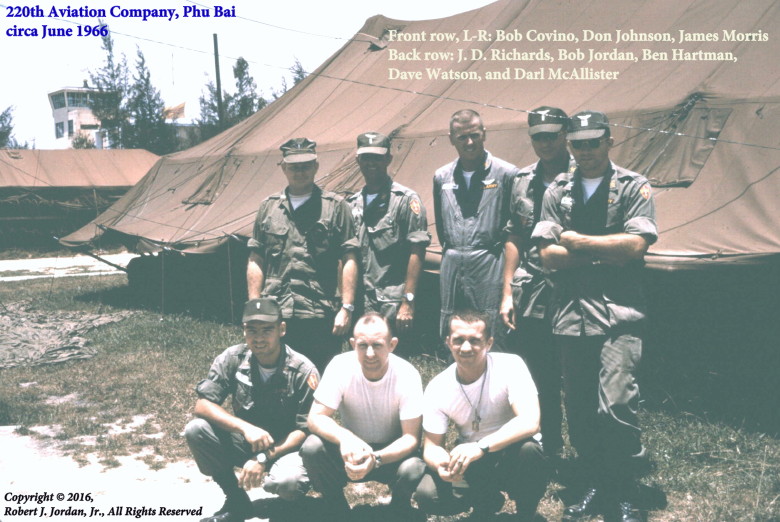
DEROS:
Here is the most recent photo I could find. I take more photos than I am in.
My second tour was at Chu Lai, 123 Aviation Battalion, Americal Division.
I got an in country transition into the Huey. I had a platoon of slicks, was on the division staff, and I commanded a company. I retired in 1976 as a Major, then returned to school and got another degree and taught school until 1996.
I have looked at Covinoís site and think I have identified a few folks but Iíll work on that later. I am the one sitting in our lounge (I do not remember those clothes).
More information on Jim Harris and the missed shot. The .50 missed him but severed his aileron cable, and he successfully got it back on the ground. A story on Covino: he purchased a reel to reel recorder and recorded many songs, but when he listened to the recordings he got the music and the sound of Beach Boy Alpha on every rotation.
Bob
